Fukushima — risk zone
Categories: Catastrophes | Ecology
By Pictolic https://pictolic.com/article/fukushima-risk-zone.htmlIn June, National Geographic sent photographer David Guttenfelder in the risk zone around the Fukushima plant, which suffered from the earthquake and tsunami earlier this year. He filmed the city became a Ghost where the streets aimlessly wandering Pets and livestock. Later in November, David came back here, when for the first time journalists were allowed inside after the triple disaster in March of this year. In some places the buildings of the complex seem to be just a bunch of bent metal and cracked concrete. Tens of thousands of people remain without shelter, without the slightest hint of when they can return home, and if I can go back. This issue contains pictures from both trips photographer in the risk zone Fukushima – the first six made in December 2011.
(Just 20 photos)
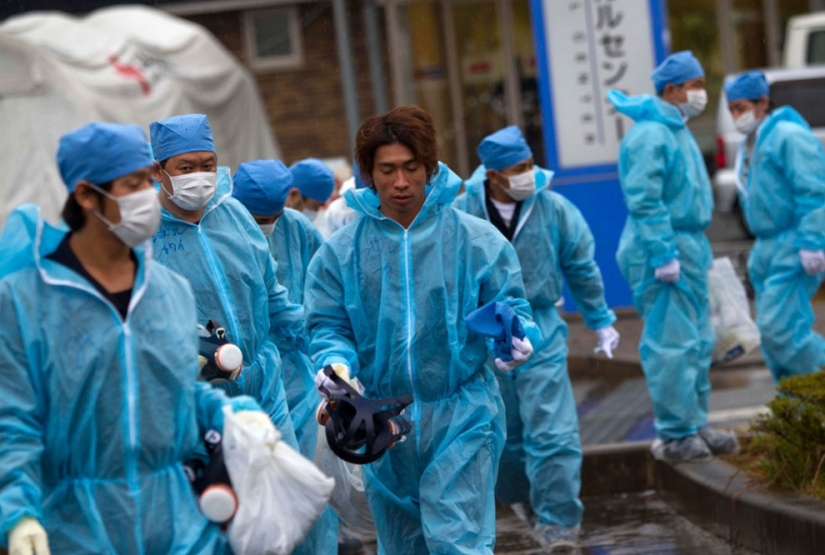
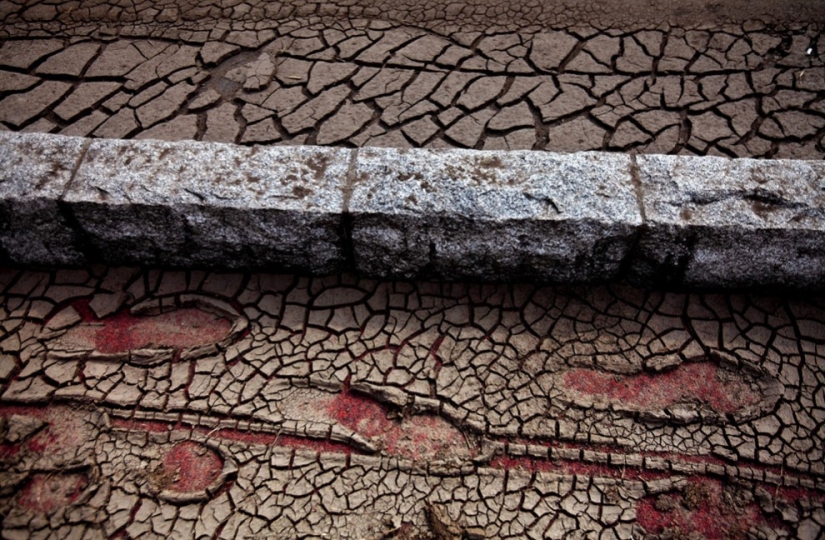
1. After the disaster in March 2011, tens of thousands of people ordered to leave their homes near the destroyed Fukushima nuclear power plant, and some traces still remained in the frozen dirt. (© David Guttenfelder/National Geographic)
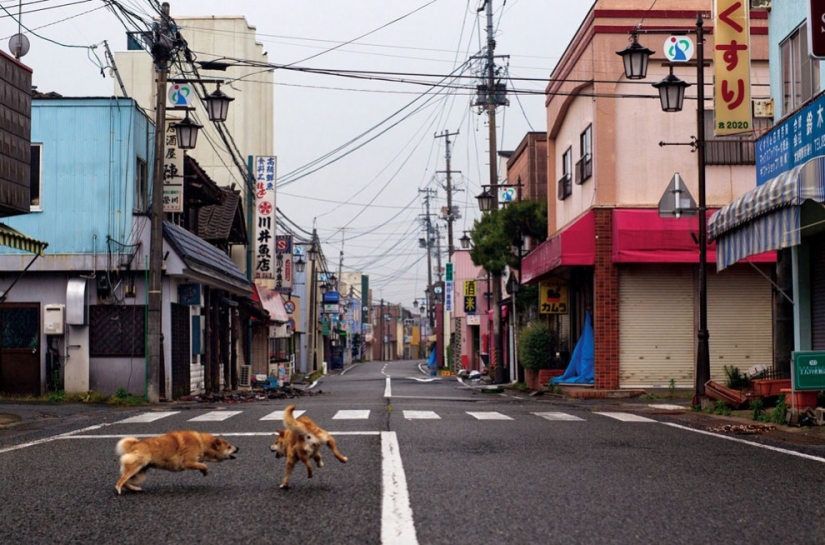
2. Two dogs fight in the empty streets Okuma. In the first days after the disaster it was full of abandoned Pets – cows, pigs, goats, dogs, cats, even ostriches. Often, breaking all the prohibitions and barricades, the volunteers made their way here, catch animals and reunited with owners, others were fed. But by the summer the number of animals has sharply decreased – many died of hunger and disease. (© David Guttenfelder/National Geographic)
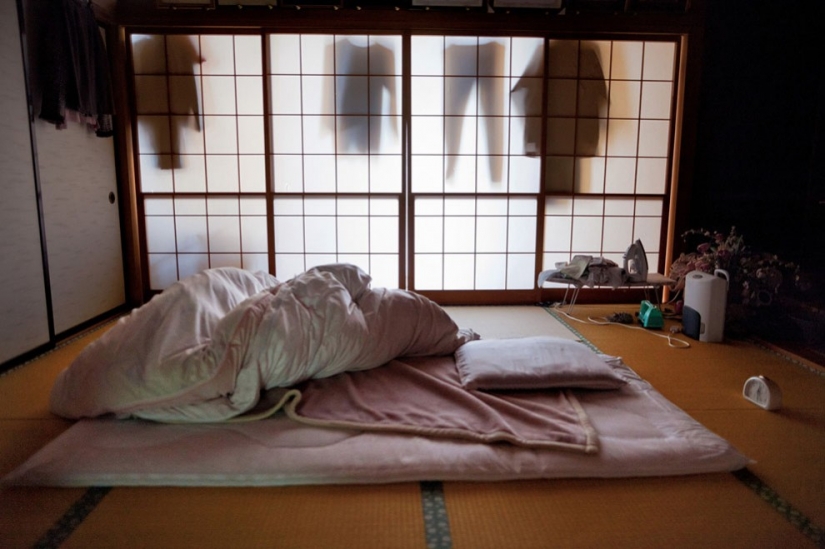
3. Usually futons are folded and stored in cabinets, but the residents didn't have time to clean the houses – you had to grab the thing. This is one of the many bedrooms in Okoume, where everything has remained as it was in the moments of evacuation. City officials have accused the company Tepco that it had not informed the residents about the impending crisis. (© David Guttenfelder/National Geographic)
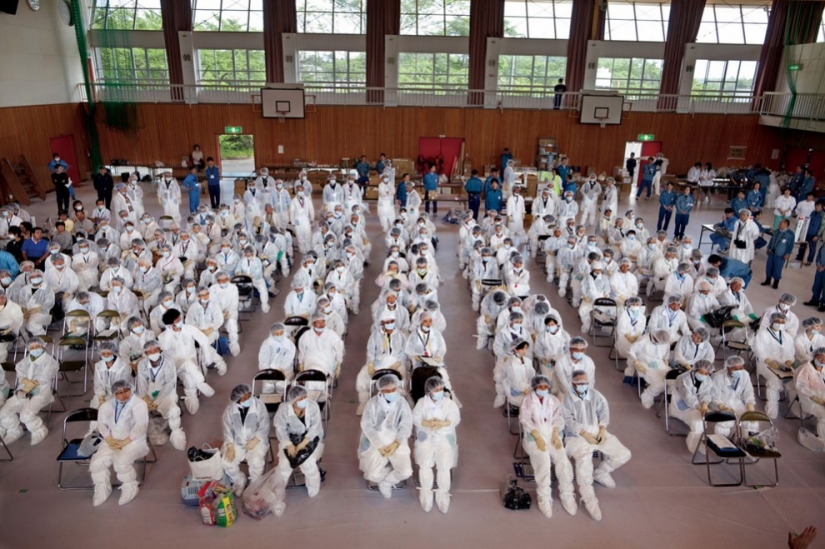
4. Residents of Hirono in protective suits misleading summary information before returning to their home to pick up some things (the bus will not fit larger items). (© David Guttenfelder/National Geographic)
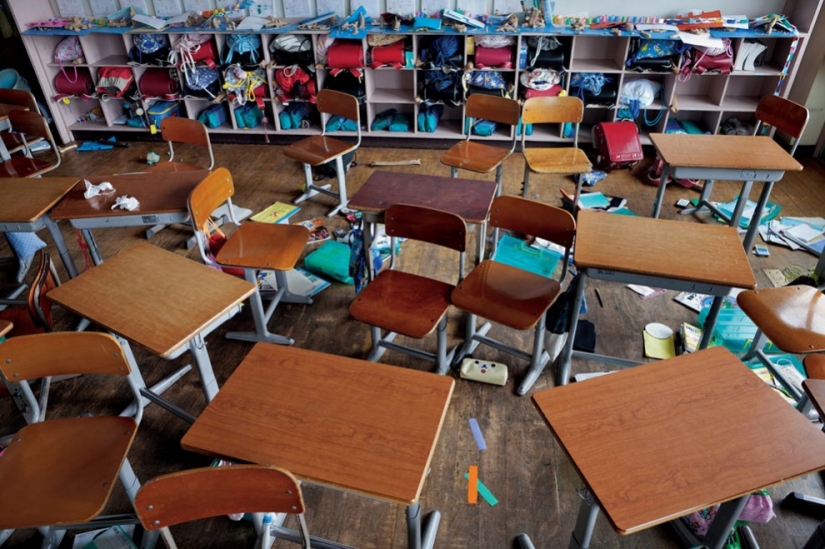
5. Exercises rapid evacuation are common in Japan, so when there was a real disaster, the children knew what to do, besides, they thought that they were going to be back soon Since the children ran away, it took several months. In the class and left-shifted desks and scattered school things. (© David Guttenfelder/National Geographic)
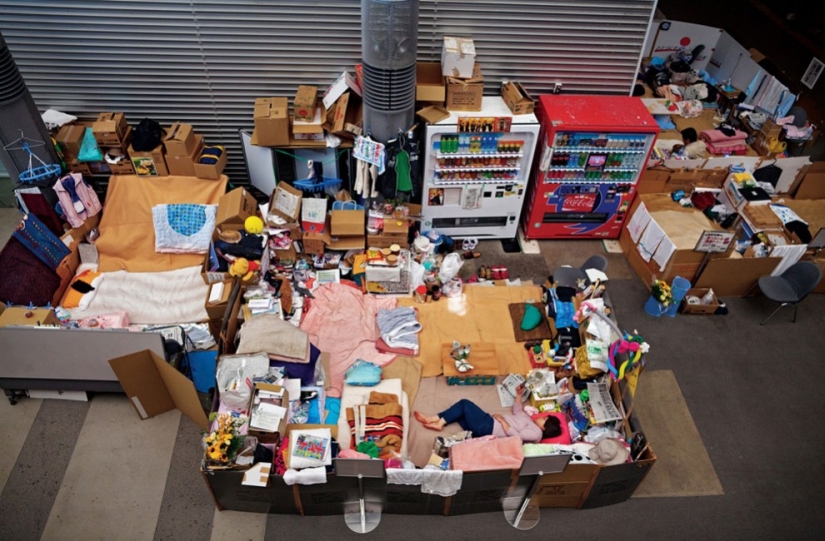
6. Girl sleeping in his "house" on the floor of the exhibition center "Big Palette". In the emergency centers do not have enough space, and the disease spreads very fast. Older people often simply refuse to move to temporary housing and part with relatives and friends. Social workers trying to prevent a wave kodoku-si, or a lonely death among the elderly. (© David Guttenfelder/National Geographic)
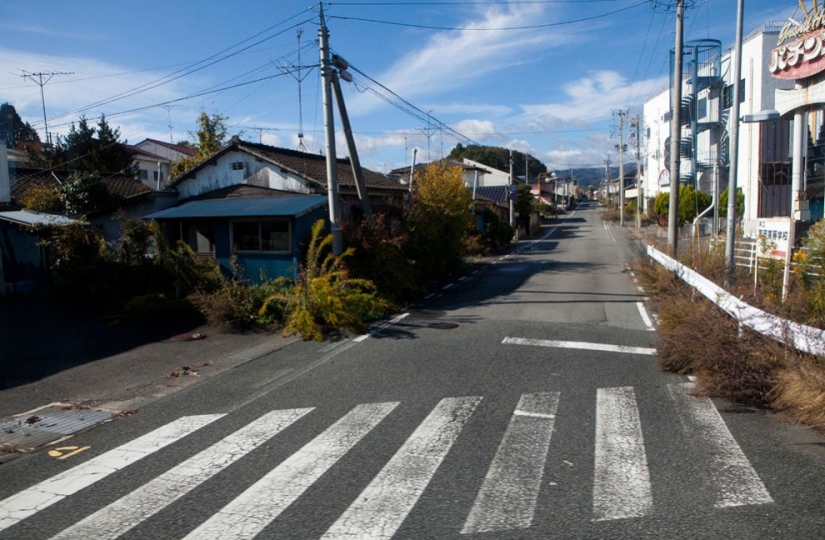
7. Empty street in the risk zone around the Fukushima plant near Okuma. (AP Photo/David Guttenfelder)
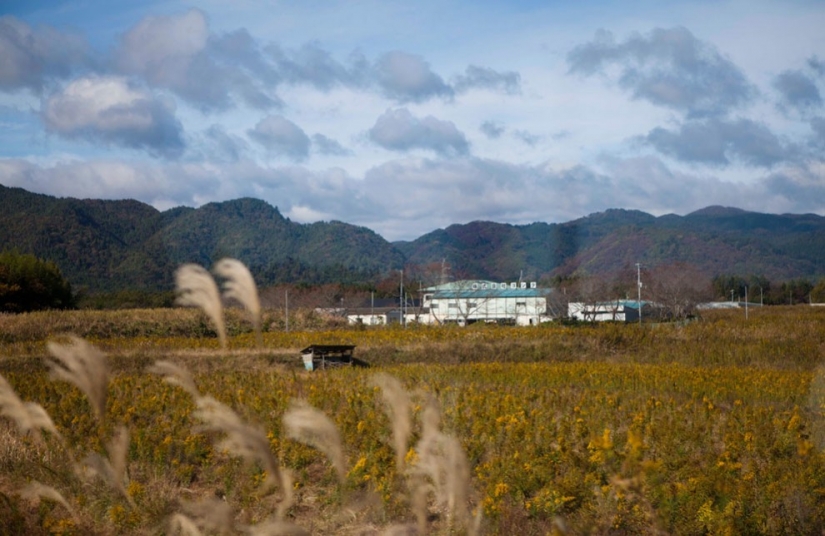
8. Empty field and buildings in the risk zone around the Fukushima plant. (AP Photo/David Guttenfelder)
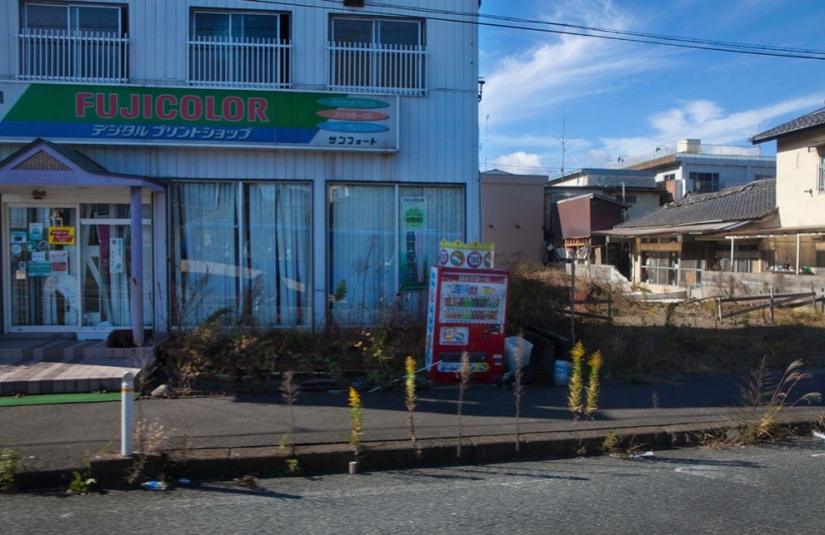
9. Abandoned area near Okuma. (AP Photo/David Guttenfelder)
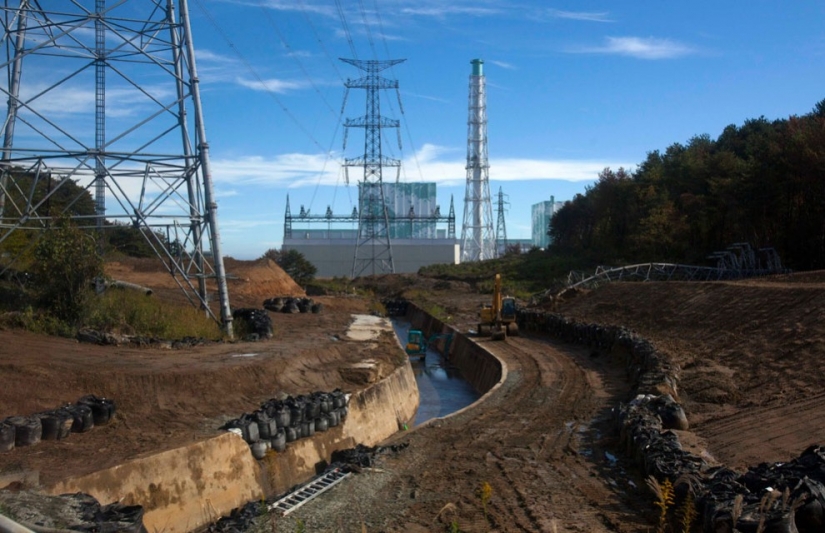
10. The fifth and sixth reactors at Fukushima – a view from the bus window in Futaba. Journalists were first allowed to plant after the accident, where they saw a horrifying scene of neglect: overturned cars, cracked buildings of the reactors and the mountains of wreckage and debris. (AP Photo/David Guttenfelder)
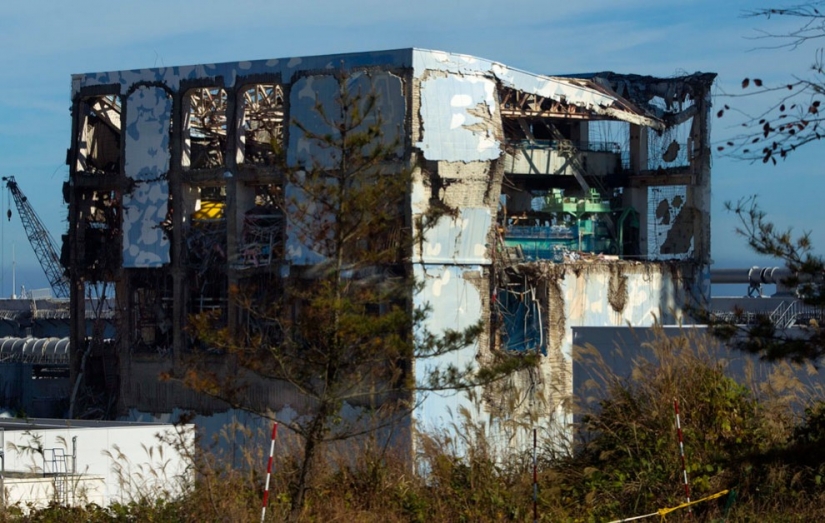
11. The building of the 4th reactor of Fukushima nuclear power plant. (AP Photo/David Guttenfelder)
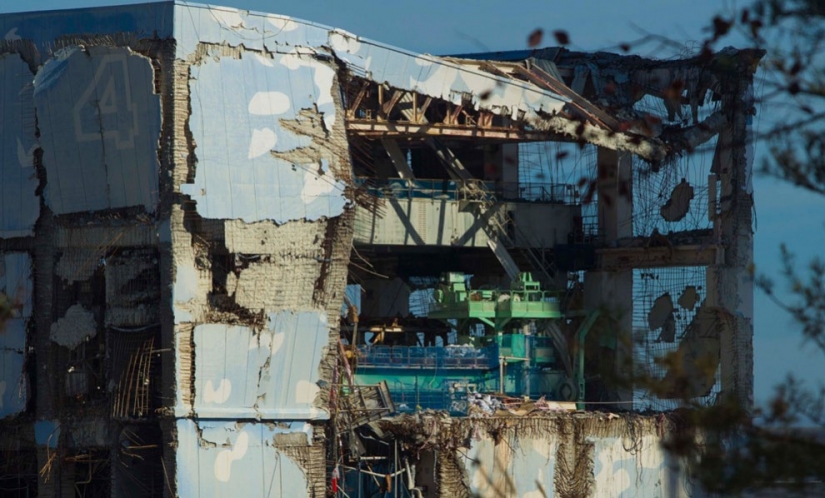
12. Same building a little closer. (AP Photo/David Guttenfelder)

13. Workers in protective clothing enter the building upon arrival at the training complex which now serves as the base of operations for those who are struggling with the nuclear disaster at Fukushima. (AP Photo/David Guttenfelder)
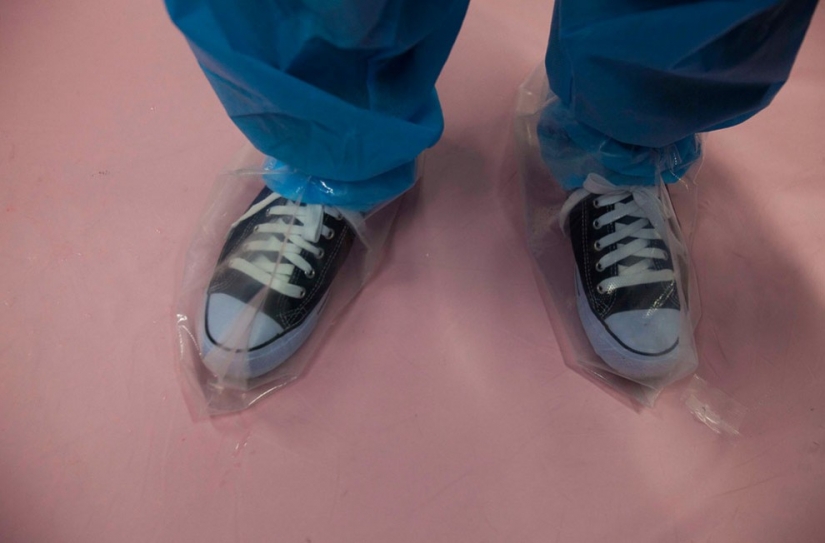
14. An employee of the company "Tokyo Electric Power Co." in the protective bags on the legs in the operational center Fukushima. (AP Photo/David Guttenfelder)
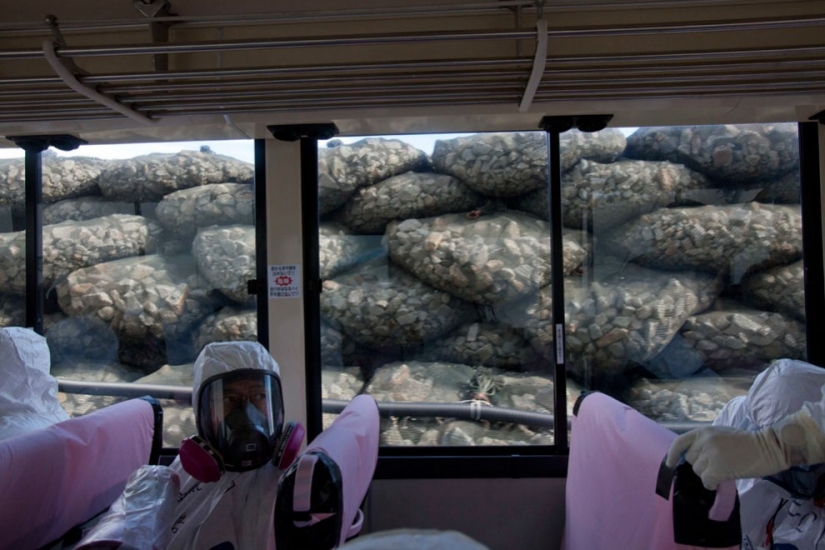
15. Employees of the company "Tokyo Electric Power Co." and Japanese journalists pass by a new sea barricade next to the Fukushima plant. (AP Photo/David Guttenfelder)
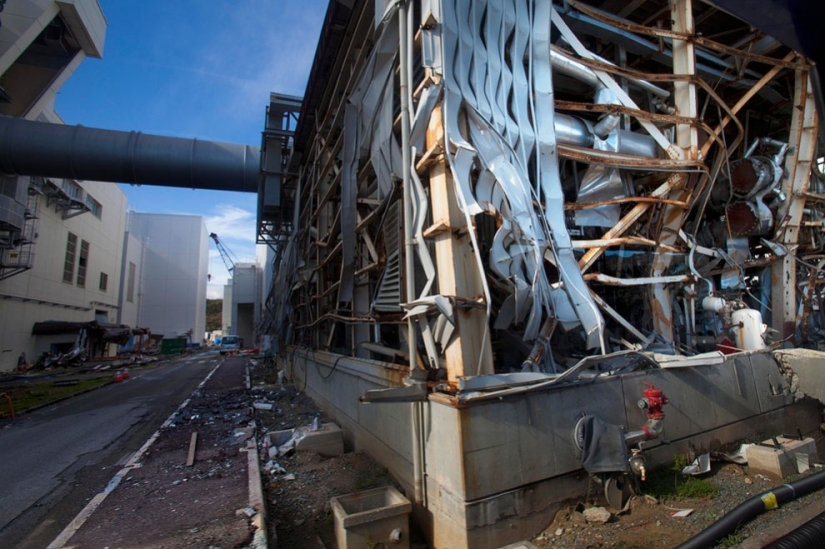
16. The territory of the Fukushima nuclear power plant after the disaster. (AP Photo/David Guttenfelder)
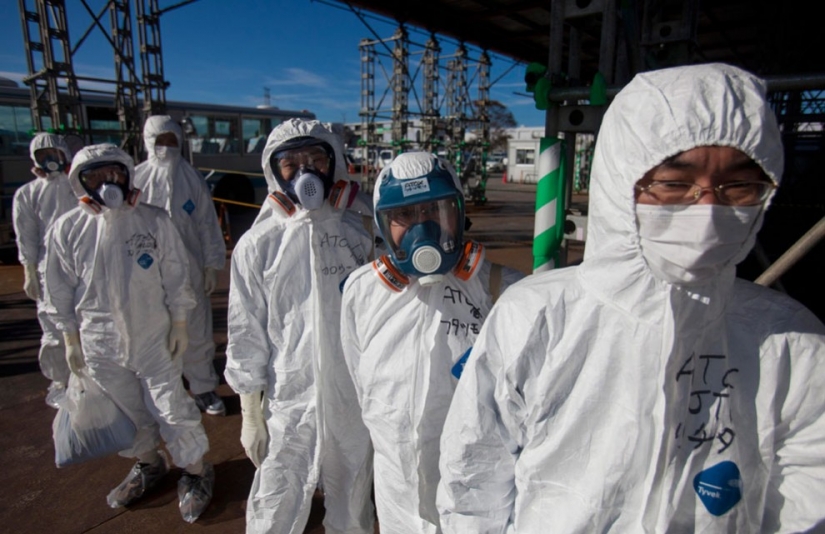
17. The Fukushima nuclear power plant workers in protective suits and masks waiting for when they would be allowed to go inside. The earthquake and tsunami has brought huge losses and suffering, but those who lived near the Fukushima plant suffered doubly: in addition to material and moral losses they are forced to live in constant fear – fear of radiation, which can manifest much later the disaster. (AP Photo/David Guttenfelder)
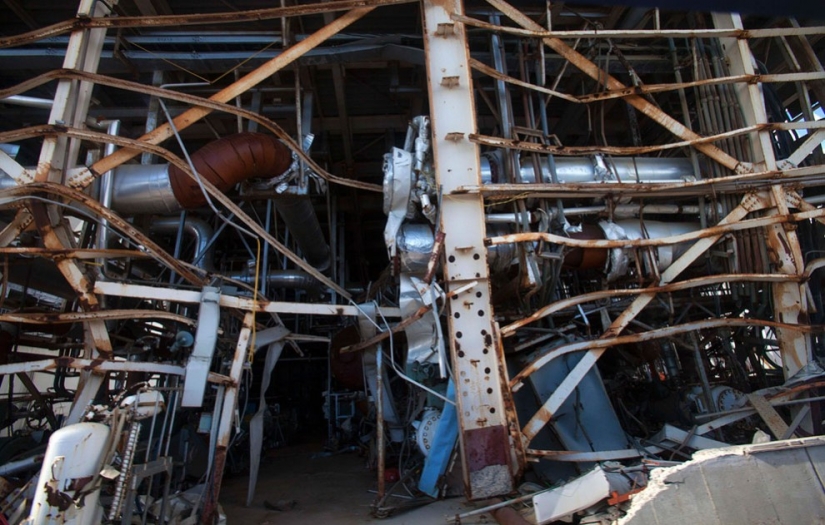
18. Damage at Fukushima. (AP Photo/David Guttenfelder)
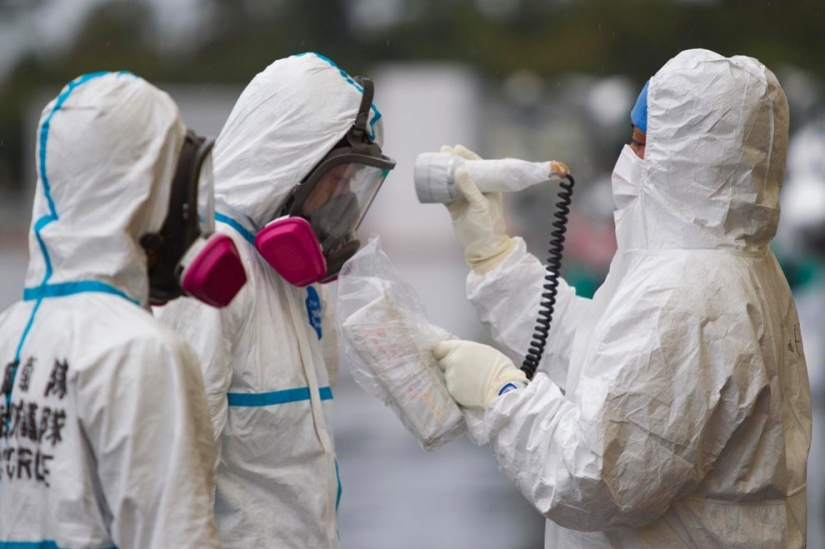
19. Man check the level of radiation at the centre of the former soccer training complex now operational database. (AP Photo/David Guttenfelder)
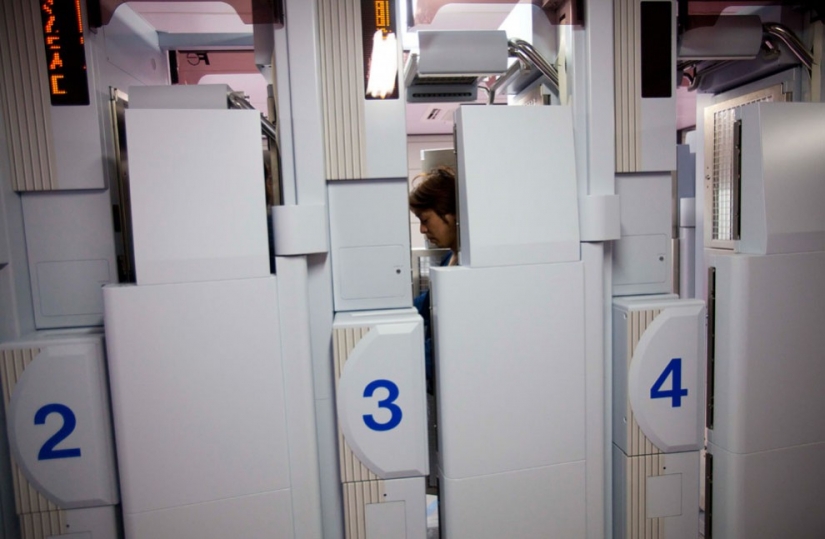
20. The woman checked for radiation levels after removal of the protective suit. (AP Photo/David Guttenfelder)
Keywords: Nuclear power plants | Ghost town | The building | Earthquake | Radiation | Fukushima | Tsunami | Japan
Post News ArticleRecent articles

Do you like to cook, buy food for the future, but the short life of vegetables and fruits does not give you peace of mind? There is ...

Ideally, veganism involves not only the rejection of eating animal products. It is a way of life where there are products which ...
Related articles

Each of us regularly visit thought to give up and leave the village in the wilderness, in Saratov! somewhere away from this eternal ...

Chiatura is a mining town in Georgia, which houses dozens of operating and broken funiculars built in the 1950s. Previously, ...

Abandoned settlements exist all over the world & # 8212; mysterious, eerie, invariably arousing curiosity. There are many reasons ...

Charlie Chaplin is known throughout the world; his career as a silent film actor lasted 75 years, ending with his death. Chaplin ...